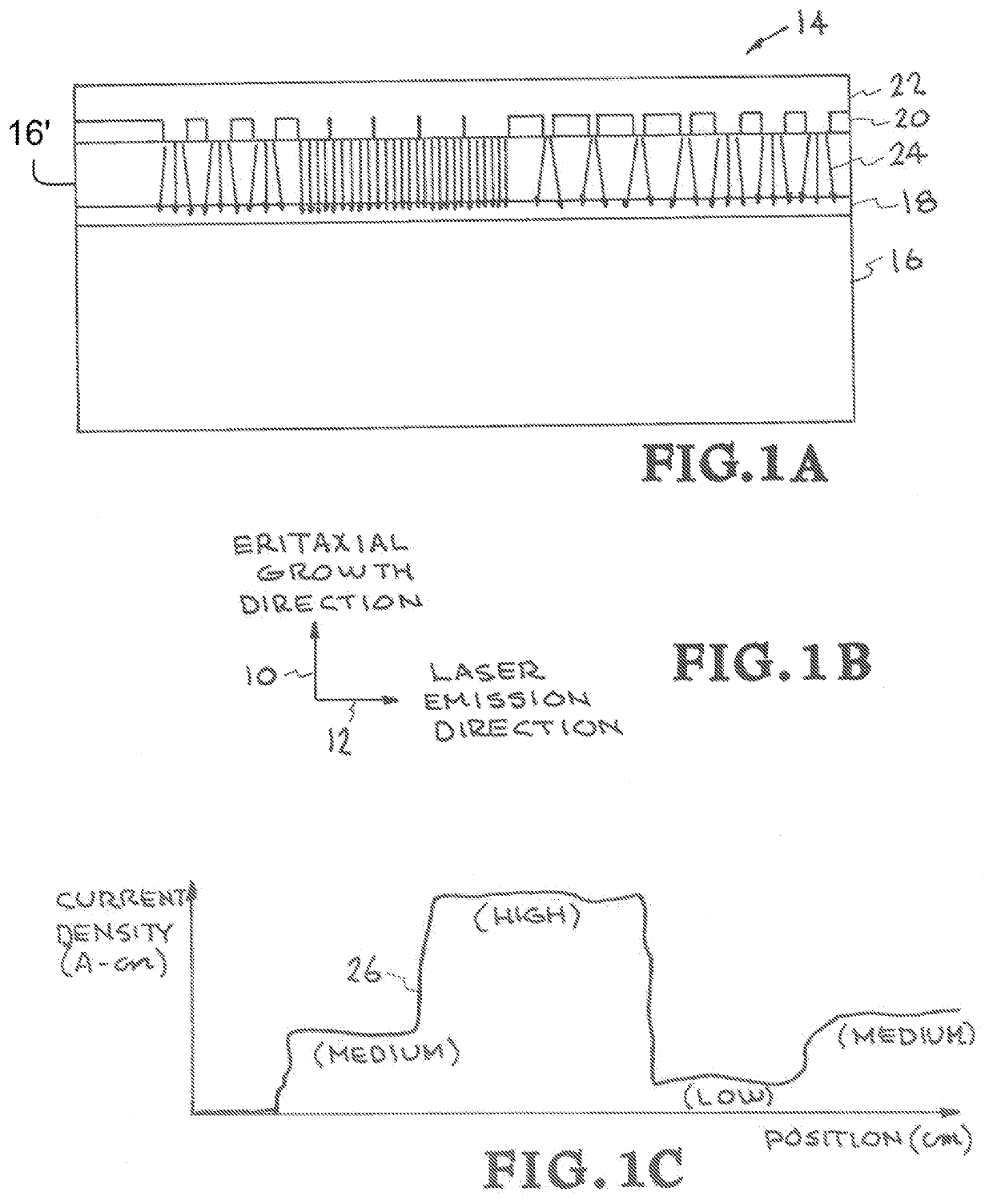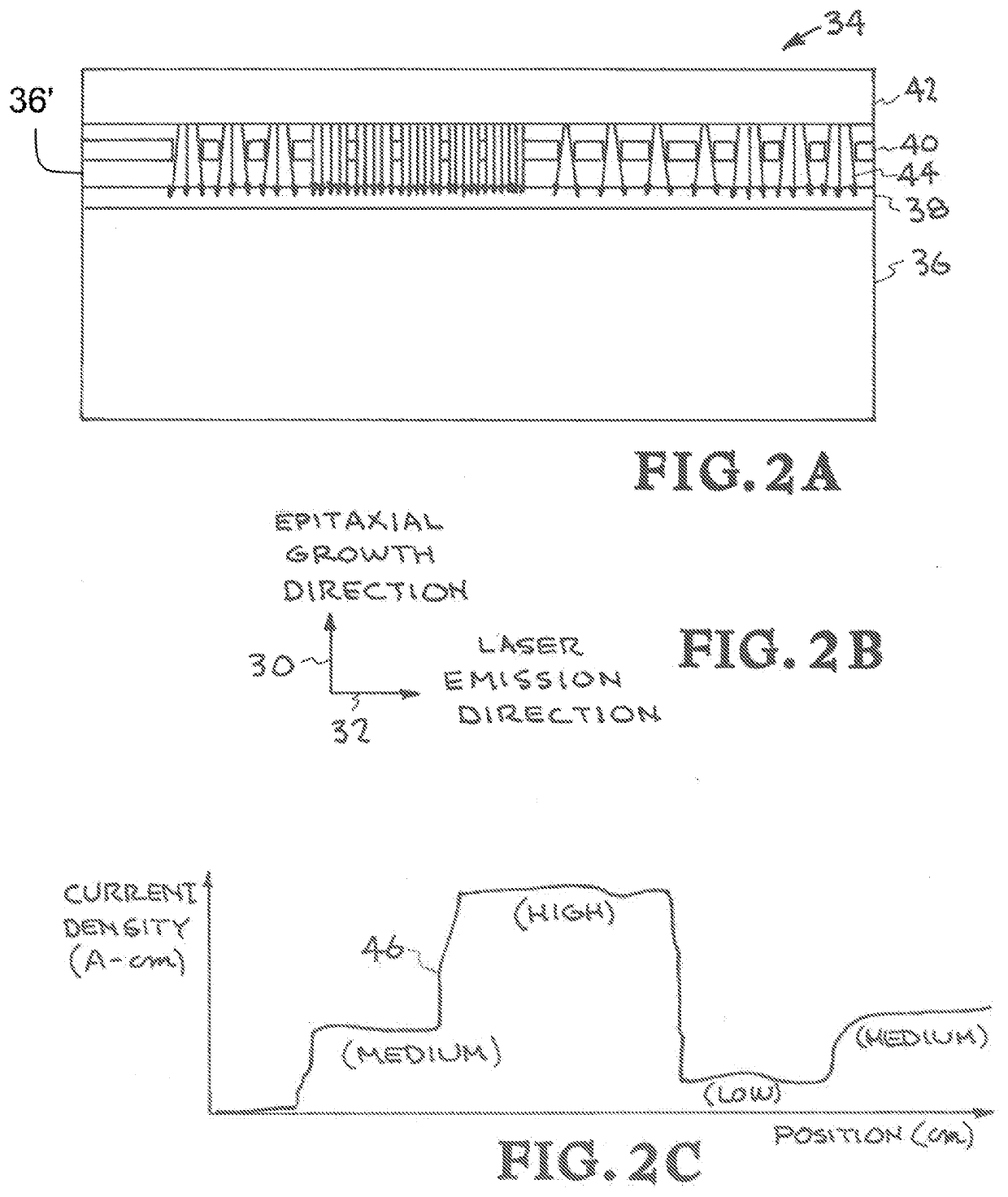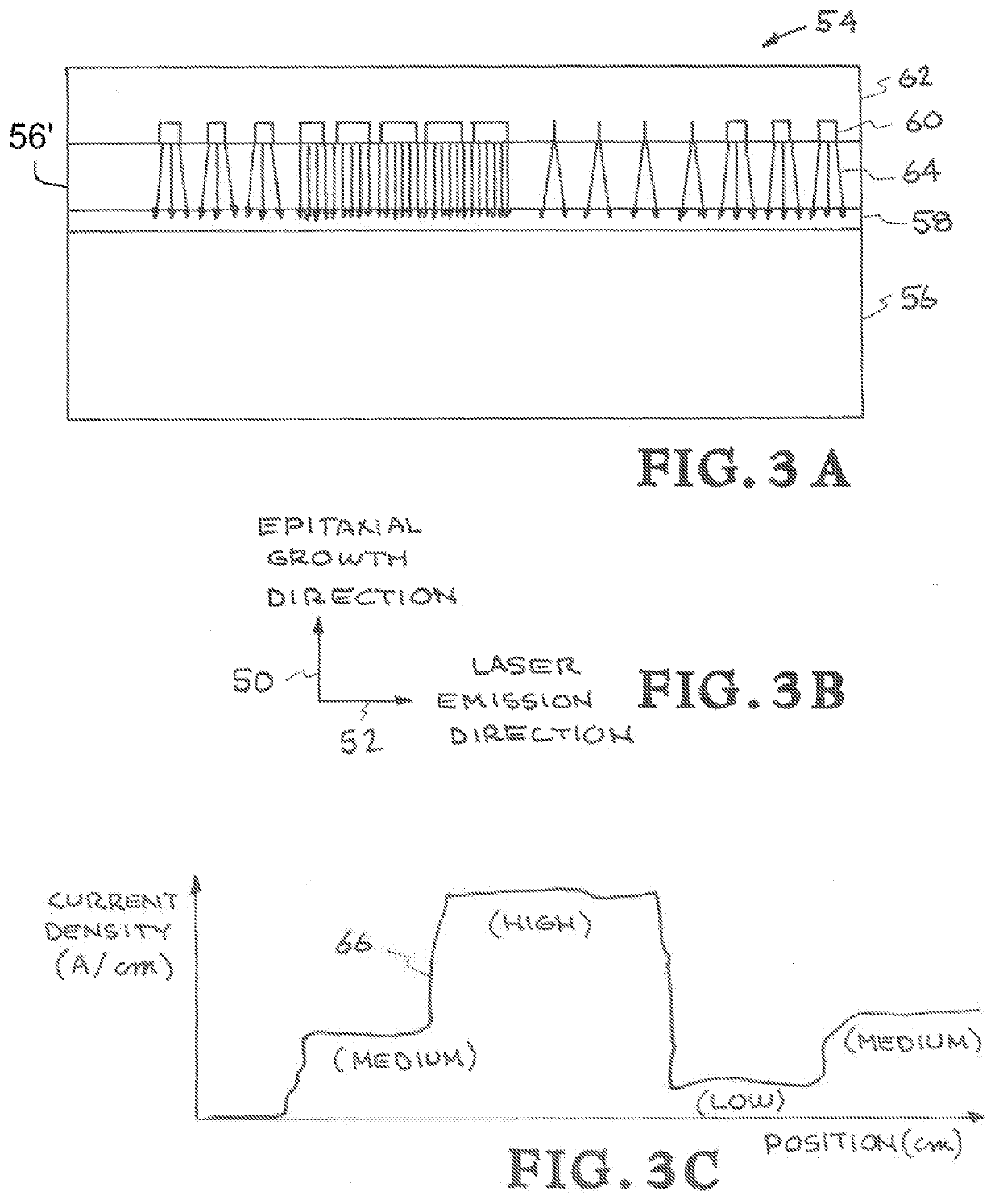Engineered current-density profile diode laser
a current density and profile technology, applied in semiconductor lasers, laser details, laser optical resonator construction, etc., can solve the problems of reducing power conversion efficiency, unable to scale brightness and power through cavity length scaling, and long cavity length diode lasers suffering from large asymmetry in photon density, carrier density, gain and recombination lifetime along the length of the cavity, etc., to achieve higher reliable output power, reduce current density, and improve the effect of electrical to optical conversion efficiency
- Summary
- Abstract
- Description
- Claims
- Application Information
AI Technical Summary
Benefits of technology
Problems solved by technology
Method used
Image
Examples
Embodiment Construction
[0018]This technology enables diode lasers which either operate with greater power conversion efficiency or which operate with equivalent power conversion efficiency with greater output power. This is achieved through careful control of the current density profile in the longitudinal direction of the device in order to overcome local current crowding and longitudinal spatial hole burning effects which limit the efficiency and power of long-cavity high power diode lasers.
[0019]Three techniques for controlling the longitudinal current density at the quantum wells along the length of the diode are described. The first is based on high power broad area diode lasers which use a plurality of apertures (also referred to herein as a plurality of vias) through a dielectric to define the emitting area. The second is based on similar devices which instead create the current aperture through proton implantation in the region of semiconductor which is to be rendered non-conductive. In both cases...
PUM
| Property | Measurement | Unit |
|---|---|---|
| diameter | aaaaa | aaaaa |
| diameter | aaaaa | aaaaa |
| current diffusion length | aaaaa | aaaaa |
Abstract
Description
Claims
Application Information
 Login to View More
Login to View More - R&D
- Intellectual Property
- Life Sciences
- Materials
- Tech Scout
- Unparalleled Data Quality
- Higher Quality Content
- 60% Fewer Hallucinations
Browse by: Latest US Patents, China's latest patents, Technical Efficacy Thesaurus, Application Domain, Technology Topic, Popular Technical Reports.
© 2025 PatSnap. All rights reserved.Legal|Privacy policy|Modern Slavery Act Transparency Statement|Sitemap|About US| Contact US: help@patsnap.com



